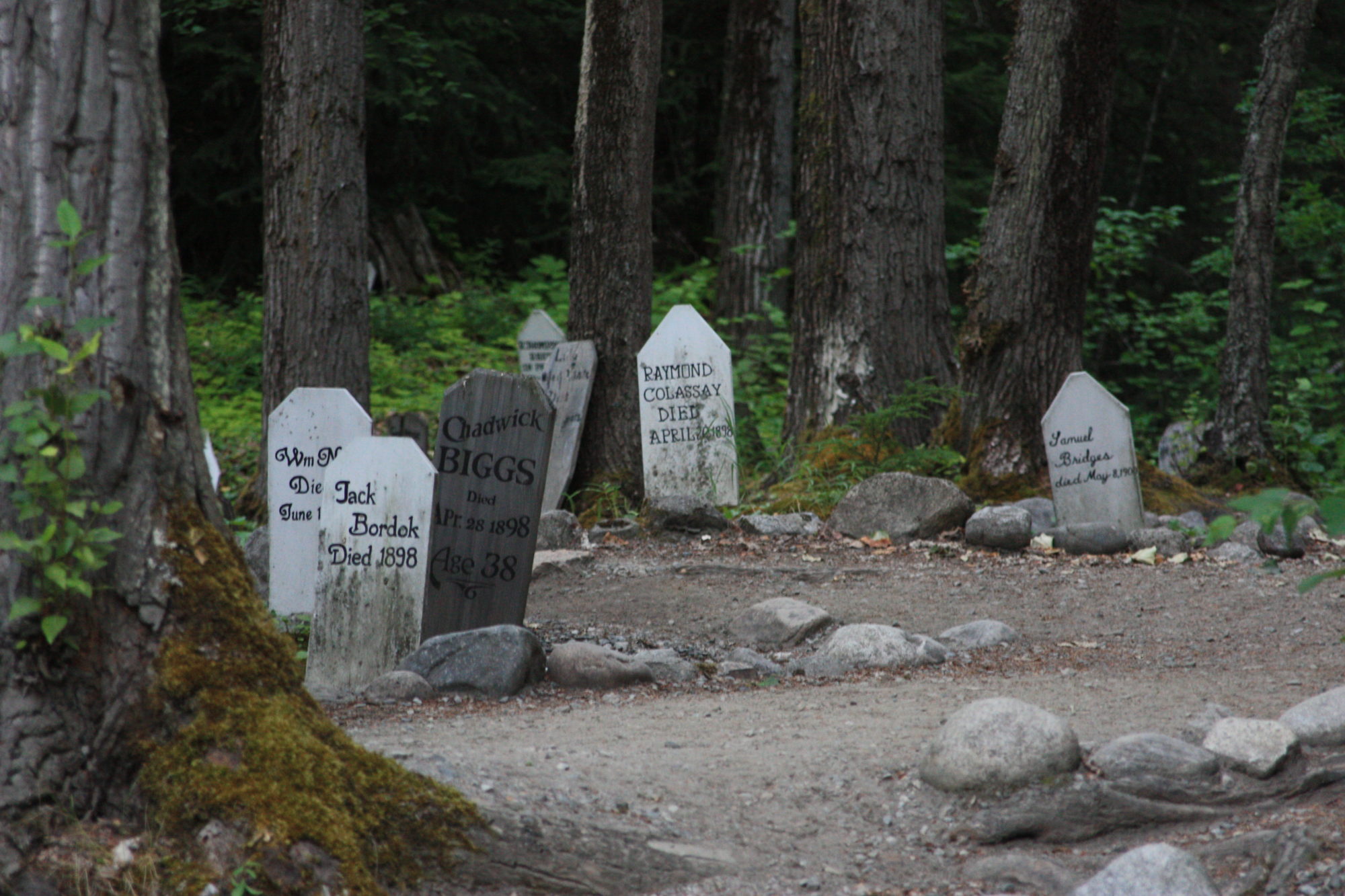
Albion Towle was born in 1863 in Venzie, Maine. He came to Skagway in 1898 from Snohomish Washington where he had a shingle business. He was a hotelier at Lake Bennett, when he died on this day, March 31, 1898. He was a member of the order of foresters, AOUW and so was shipped home to Snohomish to be buried. This from the online obit:
“…Mr. Towle wanted to go in but did not get away until last January. He went to Skagway and in February sent for his wife. They then started over the pass for Lake Bennet, where they opened a log cabin hotel, and were doing well financially, until early in the morning of March 24th, Mr. Towle was suddenly taken very sick with puenmonia, and in less than an hour was delirous, never again wholly recoving consciouness.
The folling Sunday morning Mrs. Towle secured a sled and dog team, and with the assistance of one man, started with her husband for medical aid at Skagway. She walked bside the sled, watching over him and keeping his face and hands from freezing, while passing through the fearful cold part of the journey at the summit.
They arrived in Skagway at nine o’clock at night and Mr. Towle was placed in the hospital. During the entire trip from morning till night walking thirty-seven miles, Mrs. Towle did not take a particle of nourishment, and this with her anxiety for her husband and the fathigue of the long hard climb, was too much for her, and after she had secured his comfort, she completely collapsed, and was herself prostrate until after arriving in Snohomish. The Snohomish boys at Skagway immediately came to her service, and everything possible was done for Mr. Towle, but on the following Thursday he succumbed to the disease.
The body was brought back to Seattle on the first steamer, and Messrs. M.J. Bird and James Sipprell accompanied the beraved widow and her dead through from the north and take the body was laid to rest in Woodlwan cemetery. Mrs. Towle and the bereaved relatives have the sympathy of the entire community in their sad bereavement.”
The symbol above is for the Ancient Order of United Workmen:
“The American fraternal benefit network began with the organization the Ancient Order of United Workmen in Meadville, Pennsylvania on October 27, 1868. The AOUW was founded by John Jordan Upchurch, a Mason, with the aim of adjusting “all differences which may arise between employers and employees, and to labor for the development of a plan of action that may be beneficial to both parties, based on the eternal truth that the interests of labor and capitol are equal and should receive equal protection.” Each member paid $1 into the insurance fund to cover the sum of not less than $500 in benefits paid to a members dependents when he died. Each time a member died, $1 was due from the surviving members to reestablish the fund. Fraternal benefits societies soon became quite popular as a means of providing financial protection to working class people at an affordable rate.”
obit online in rootsweb: Snohomish County Tribune,4-15-1898








